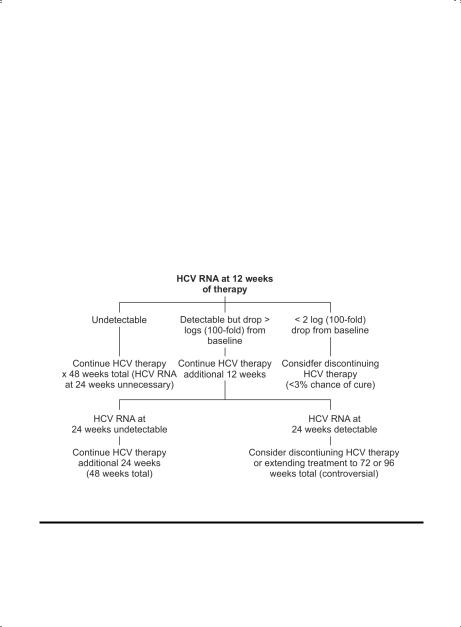
- •Abbreviations
- •1 Overview of Antimicrobial Therapy
- •Factors in Antibiotic Selection
- •Factors in Antibiotic Dosing
- •Microbiology and Susceptibility Testing
- •PK/PD and Other Considerations in Antimicrobial Therapy
- •Antibiotic Failure
- •Pitfalls in Antibiotic Prescribing
- •References and Suggested Readings
- •2 Empiric Therapy Based on Clinical Syndrome
- •Empiric Therapy of CNS Infections
- •Empiric Therapy of HEENT Infections
- •Empiric Therapy of Lower Respiratory Tract Infections
- •Empiric Therapy of GI Tract Infections
- •Empiric Therapy of Genitourinary Tract Infections
- •Empiric Therapy of Sexually Transmitted Diseases
- •Empiric Therapy of Bone and Joint Infections
- •Empiric Therapy of Skin and Soft Tissue Infections
- •Sepsis/Septic Shock
- •Febrile Neutropenia
- •Transplant Infections
- •Toxin-Mediated Infectious Diseases
- •Bioterrorist Agents
- •References and Suggested Readings
- •Gram Stain Characteristics of Isolates
- •Parasites, Fungi, Unusual Organisms in Blood
- •Parasites, Fungi, Unusual Organisms in CSF/Brain
- •Parasites, Fungi, Unusual Organisms in Lungs
- •Parasites, Fungi, Unusual Organisms in Heart
- •Parasites, Fungi, Unusual Organisms in the Liver
- •References and Suggested Readings
- •5 HIV Infection
- •HIV Infection Overview
- •Stages of HIV Infection
- •Acute (Primary) HIV Infection
- •Initial Assessment of HIV Infection
- •Indications for Treatment of HIV Infection
- •Antiretroviral Treatment
- •Treatment of Other Opportunistic Infections in HIV
- •HIV Coinfections (HBV/HCV)
- •References and Suggested Readings
- •6 Prophylaxis and Immunizations
- •Surgical Prophylaxis
- •Post-Exposure Prophylaxis
- •Chronic Medical Prophylaxis
- •Endocarditis Prophylaxis
- •Travel Prophylaxis
- •Tetanus Prophylaxis
- •Immunizations
- •References and Suggested Readings
- •Empiric Therapy of CNS Infections
- •Empiric Therapy of HEENT Infections
- •Empiric Therapy of Lower Respiratory Tract Infections
- •Empiric Therapy of Vascular Infections
- •Empiric Therapy of Gastrointestinal Infections
- •Empiric Therapy of Bone and Joint Infections
- •Empiric Therapy of Skin and Soft Tissue Infections
- •Common Pediatric Antimicrobial Drugs
- •References and Suggested Readings
- •8 Chest X-Ray Atlas
- •References and Suggested Readings
- •9 Infectious Disease Differential Diagnosis
- •11 Antimicrobial Drug Summaries
- •Appendix
- •Malaria in Adults (United States)
- •Malaria in Children (United States)
- •Index

344 |
A n t i b i o t i c E s s e n t i a l s |
|
|
|
HIV COINFECTIONS (HBV/HCV) |
|
|
Hepatitis B Virus (HBV)
Preferred Therapy, Duration |
|
|
of Therapy, Chronic |
|
|
Maintenance |
Alternate Therapy |
Other Options/Issues |
Therapy for patients who require ART
Patients should be treated with agents active against both HIV and HBV or with agents with independent activity against each virus
Consider tenofovir + emtricitabine as part of HIV and HBV regimen
Lamivudine or emtricitabinenaïve patients
[Lamivudine 150 mg PO BID (or 300 mg PO daily) or
emtricitabine 200 mg PO daily] + tenofovir (TDF) 300 mg PO daily (+ additional agent[s] active against HIV)
Lamivudine or emtricitabineexperienced patients with detectable HBV DNA (assume lamivudine-resistance)
If not on TDF: Add TDF 300 mg PO daily as part of an ART regimen + lamivudine or emtricitabine;
or
Adefovir 10 mg PO daily + lamivudine or emtricitabine + other combination ART;
or
Treatment for patients who do not require ART
Use agents with sole
activity against HBV and with the least potential of selecting HIV resistance mutations
Consider early initiation of ART, especially for patients with high HBV DNA For patients with CD4+ count > 350 cells/μL, HBeAg (-), HBV DNA > 2,000 IU/mL (> 20,000 copies/mL) Adefovir 10 mg PO daily
For patients with CD4+
count > 350 cells/μL, HBeAg (+), HBV DNA > 20,000 IU/mL (> 200,000 copies/mL), and elevated ALT
Emtricitabine, entecavir, lamivudine, or tenofovir should not be used for the treatment of HBV
infection in patients who are not receiving combination ART
Among patients coinfected with HIV, HBV, and HCV, consideration of starting ART should be the first priority..
If ART is not required, an interferon-based regimen, which suppresses both HCV & HBV, should be considered
If IFN-based treatment for HCV has failed, treatment of chronic HBV with nucleoside or nucleotide analogs is recommended
Cross-resistance to emtricitabine or telbivudine should be assumed in patients with suspected or proven 3TC resistance
When changing ART regimens, continue agents with anti-HBV activity because of the risk of IRIS

|
Chapter 5. HIV Infection |
345 |
Hepatitis B Virus (HBV) (cont'd) |
|
|
|
|
|
Preferred Therapy, Duration |
|
|
of Therapy, Chronic |
|
|
Maintenance |
Alternate Therapy |
Other Options/Issues |
Entecavir 1 mg PO daily can be considered in patients with complete HIV suppression (while on ART) who do not demonstrate YMDD (M204V/I) motif mutations in HBV DNA
Duration of therapy: Because of the high rates of relapse, certain specialists recommend continuing therapy indefinitely
Peginterferon alfa-2a 180 μg SQ weekly x 48 weeks—with careful follow-up of HBeAg conversion
If anti-HBV therapy is discontinued and a flare occurs, therapy should be reinstituted, as it can be potentially life saving
Adapted from: Sax PE, Cohen CJ, Kuritzkes DR.. HIV Essentials, 7th edition.. Jones & Bartlett, Sudbury, MA, 2014..
Epidemiology: Hepatitis B virus (HBV) infection is relatively common in patients with HIV, with approximately 60% showing some evidence of prior exposure.. Chronic hepatitis B infection interacts with HIV infection in several important ways:
• HBV increases the risk of liver-related death and hepatotoxicity from antiretroviral therapy
• 3TC, FTC, and tenofovir each have anti-HBV activity. . Thus selection of antiretroviral therapy for patients with HBV can have clinical and resistance implications for HBV as well as HIV. . This is most notable with 3TC and FTC, as a high proportion of coinfected patients will develop HBVassociated resistance to these drugs after several years of therapy.. This resistance reduces response to subsequent non-3TC or FTC anti-HBV therapy..
• Cessation of anti-HBV therapy may lead to exacerbations of underlying liver disease; in some cases, these flares have been fatal..
• Immune reconstitution may lead to worsening of liver status, presumably because HBV disease is immune mediated.. This is sometimes associated with loss of HBEAg..
• Entecavir can no longer be recommended for HIV/HBV coinfected patients, as it has anti-HIV activity and may select for HIV resistance mutation M184V.. If needed, it should be used only with a fully suppressive HIV regimen..
Diagnostic Consideration: Obtain HBSAb, HBSAg, and HBCAb at baseline in all patients.. If negative, hepatitis B vaccination is indicated.. If chronic HBV infection (positive HBSAg) is identified, obtain HBEAg, HBEAb, and HBV DNA levels.. As with HCV infection, vaccination with hepatitis A vaccine and counseling to avoid alcohol are important components of preventive care.. Isolated Hepatitis B Core Antibody: Many patients with HIV have antibody to hepatitis B core (anti-HBc) but are negative for both HBSAg and HBSAb.. This phenomenon appears to be more common in those with HCV coinfection (Clin Infec Dis 2003 36:1602–6).. In this scenario, diagnostic considerations include: (1) recently acquired HBV, before development of HBSAb; (2) chronic HBV, with HBSAg below the levels of detection; (3) immunity to HBV, with HBSAb below the levels of detection; (4) false-positive anti-HBV core.. As the incidence of HBV is relatively low in most populations and anti-HBc alone is usually a stable phenomenon over years, recent acquisition of HBV is rarely the explanation.. We recommend checking HBV DNA in this situation:

346 |
A n t i b i o t i c E s s e n t i a l s |
If positive, this indicates chronic HBV; if negative, then low-level immunity or false-positive anti-HBV core remain as possible explanations; since distinguishing between these possibilities cannot be done, we recommend immunization with the hepatitis B vaccine series.. It is useful to measure HBV serologic markers periodically in this population, as improvement in immune status due to ART may lead to increasing titers of HBSAb and subsequently confirm immunity..
Therapeutic Considerations: The optimal treatment for HBV infection is in evolution.. Current guidelines suggest treatment of HBV in all patients with active HBV replication, defined as a detectable HBEAg or HBV DNA.. Pending long-term studies defining optimal management, the recommendations set forth in the grid above are reasonable.. Patients being treated with regimens for HBV should be monitored for ALT every 3–4 months.. HBV DNA levels provide a good marker for efficacy of therapy and should be added to regular laboratory monitoring.. The goal of therapy is to reduce HBV DNA to as low a level as possible, preferably below the limits of detection.. The duration of HBV therapy is not well established; with development of HBEAb, while some individuals without HIV can stop therapy after reversion of HBEAg to negative, there are no clear stopping rules for HIV-coinfected patients..
Hepatitis C Virus (HCV)
Subset Pathogens Therapy
HIV Genotype 1 (includes 1a & 1b)
Preferred therapies:
Ledipasvir6 90 mg/sofosbuvir 400 mg (Harvoni) (PO) q24h x 12 weeks
Paritaprevir 150 mg/ritonavir 100 mg/ombitasvir 25 mg (PO) q24h +
dasabuvir7 250 mg (Viekira Pak) (PO) q12h + ribavirin1,2 x weeks3
Sofosbuvir 400 mg (Savaidi) (PO) q24h + Simeprevir4,8 150 mg (Olysio)
(PO) q24h ± ribavirin1 x weeks3
Genotype 2
Preferred therapy:
Sofosbuvir 400 mg (Savaidi) (PO) q24h + ribavirin1 x 12 weeks (16 weeks in cirrhosis)
Genotype 3
Preferred therapies:
Sofosbuvir 400 mg (Savaidi) (PO) q24h + ribavirin1 x 24 weeks Alternate therapy:
Sofosbuvir 400 mg (Savaidi) (PO) q24h + pegylated IFN alfa-2a/2b5
ribavirin1 x 12 weeks
Genotype 4
Preferred therapies:
Ledipasvir6 90 mg/sofosbuvir 400 mg (Harvoni) (PO) q24h x 12 weeks
Paritaprevir 150 mg/ritonavir 100 mg/ombitasvir 25 mg (Viekira Pak
minus dasabuvir) (PO) q24h + ribavirin1 x 12 weeks
Sofosbuvir 400 mg (Sovaidi) (PO) q24h + ribavirin1 x 24 weeks Alternative therapies:
Sofosbuvir 400 mg (Sovaidi) (PO) q24h + pegylated IFN alfa-2a/2b5 +
ribavirin1 x 12 weeks
Sofosbuvir 400 mg (Sovaidi) (PO) q24h + simeprevir8 150 mg (Olysio)
(PO) q24h ± ribavirin1 x 12 weeks

Chapter 5. HIV Infection |
347 |
Hepatitis C Virus (HCV) (cont'd)
Subset Pathogens Therapy
Genotype 5
Preferred therapy:
Sofosbuvir 400 mg (Sovaidi) (PO) q24h + pegylated IFN alfa-2a/2b5 + ribavirin1 x 12
weeks
Alternate therapy:
Pegylated lFN alfa-2a/2b5 + ribavirini x 48 weeks
Genotype 6
Preferred therapy:
Ledipasvir6 90 mg/sofosbuvir 400 mg (Harvoni) (PO) q24h x 12 weeks Alternate therapy:
Sofosbuvir 400 mg (Sovaidi) (PO) q24h + pegylated IFN alfa-2a/2b5 + ribavirini x 12
weeks
1Ribavirin should be dosed as following:
Weight < 75 kg: Ribavirln 1000 mg (PO) daily in 2 divided doses (400 mg in AM, 600 mg in PM)
Weight > 75 kg: Ribavirin 1200 mg (PO) daily in 2 divided doses (600 mg q12h)
2In Genotype 1b, ribavirin is only indicated in cirrhosis
312 week therapy without cirrhosis; 24 week therapy with cirrhosis
4Simperevir may be ineffective in patients with HCV genotype 1a Q80K polymorphism
5Pegylated IFN alfa-2a should be dosed 180 µg (SC) weekly.. Pegylated IFN alfa-2b should be dosed 1..5 µg/kg (SC) weekly.. Both types of pegylated IFN alfa are approved to treat genotype 1
6Ledlpasvir increases tenofovir levels, increasing risk of nephrotoxicity; avoid combination when CrCl < 60 ml/min.. Avoid combination with ritonavir-boosted regimens due to potentiation of this effect, unless regimen cannot be changed.. Monitor for tenofovir nephrotoxicity..
7Due to concerns for significant interactions, parftaprevir/ritonavir/ombitasvir/dasabuvir, should only be coadministered with the following: raitegravir, dolutegravir, enfuviritide, tenofovir, emtricitabine, lamivudine, and atazanavir.. The dose of ritonavir used for boosting of HIV protease inhibitors may need to be adjusted (or held) when administered with paritaprevir/ritonavir/ombitasvir/dasabuvir & then restored when HCV treatment is completed.. The HIV protease inhibitor should be administered at the same time as the fixed-dose HCV combination..
8Due to concerns for significant interactions, simeprevir should only be co-administered with the following: raitegravir, dolutegravir, rilpivire, maraviroc, enfuviritide, tenofovir, emtricitbine, lamivudine and abacavir..
Due to concerns for significant drug interactions, the following combinations are NOT recommended:
Ledipasvir/sofosbuvir and cobicistat & elvitegravir; sofosbuvir or ledipasvir/sofosbubvir with tipranavir; paritaprevir/
ritonavir/ombitasvir/dasabuvir and efavirenz, rilpivirine, darunavir or ritonavir-boosted lopinavir; simeprevir and
efavirenz, etravirine, nevirapine, cobicistat or any HIV protease inhibitors; ribavirin and didanosine, stavudine or
zidovudine. .
For patients with CD4 count < 200 cells/µl, Initiation of ART may be considered before HCV treatment..
Adapted from: American Association for the Study of Liver Diseases and Infectious Diseases Society of America.. Recommendations for testing, managing, and treating hepatitis C.. http://www..hcvguidelines..org.. 2014..

348 |
A n t i b i o t i c E s s e n t i a l s |
Epidemiology: Hepatitis C virus (HCV) infection is transmitted primarily through blood exposure; sexual and perinatal transmission are also possible but less efficient.. A notable exception is sexually transmitted HCV among gay men.. Since modes of transmission of HIV and HCV are similar, there are high rates of HCV coinfection in HIV—an estimated 16% of HIV patients overall, including 80% or more of IDUs and 5–10% of gay men.. Genotype 1 accounts for 75% of HCV in the United States.. HIV accelerates the progression of chronic HCV infection to cirrhosis, liver failure, and hepatocellular carcinoma.. Data are conflicting regarding the independent effect of HCV on HIV disease progression, but several studies have shown a markedly higher rate of antiretroviral therapy-induced hepatotoxicity in those with chronic HCV.. In some series, liver failure from HCV is one of the leading causes of death in HIV/HCV coinfected individuals..
Clinical Presentation: Persistently elevated liver transaminases; usually asymptomatic.. Diagnostic Considerations: All HIV-positive patients should be tested for HCV antibody.. If the antibody
test is negative but the likelihood of HCV infection is high (IDU, unexplained increase in LFTs), obtain an HCV RNA since false-negative antibody tests may occur, especially in advanced HIV disease.. Since LFT elevation does not correlate well with underlying HCV activity, a liver biopsy is the best way to assess the degree of fibrosis and inflammation..
Therapeutic Considerations:
Once Diagnosis is Established.. Advise patients to abstain from alcohol and administer vaccinations for hepatitis A and B (if non-immune).. Also obtain HCV RNA levels with genotype assessment.. HCV RNA levels do not have prognostic significance for underlying degree of liver disease, but higher levels make treatment for cure less likely.. Genotype results also correlate with cure rates (reported cure rates: 60–75% for genotypes 2 and 3; 15–25% for genotype 1).. Some clinicians elect to treat HCV without a liver biopsy due to: the risks, costs, and discomfort of the test; the potential to underestimate the degree of HCV activity due to sampling error; and the high rate of treatment success for genotypes 2 and 3..
Optimal Patient Characteristics for HCV Treatment in HIV include no active psychiatric disease or substance abuse; stable HIV disease with undetectable HIV RNA and higher CD4 cell count; receiving an antiretroviral regimen that does not contain ddl (in particular), d4T, or ZDV; and adherent to medications, follow-up visits, and blood test monitoring.. Only a small proportion of patients will meet all these criteria; therefore, to maximize treatment effect, it is important to optimize clinical status prior to starting HCV therapy.. Patients should be fully educated regarding the goals and risks of treatment, with provision of written information about side effects, local support groups, and whom to contact with questions.. It is useful to administer the first dose of treatment in the office in order to provide instructions on injection techniques..
Choice of Drug Therapy.. The treatment of choice for HCV infection is pegylated interferon plus ribavirin.. All patients should also receive hepatitis A vaccine and counseling to avoid alcohol use..
• Pegylated Interferon. . Two different formulations of pegylated interferon are available for treatment of HCV infection: (1) peginterferon alfa-2a (Pegasys), supplied as a pre-mixed solution and administered subcutaneously as a fixed dose of 180 mcg once a week; and (2) peginterferon alfa-2b (Peg-Intron), supplied as a powder that is reconstituted in saline and administered subcutaneously as a weight-based dose once a week. . Efficacy and toxicity of these two peginterferon preparations appear to be similar.. Three clinical trials have shown that pegylated interferon plus ribavirin is more effective than standard interferon plus ribavirin (N Engl J Med 2004;351:451–9; N Engl J Med 2004;351:438–50; JAMA 2004;292:2839–48).. Interferon has numerous side effects, the most important of which are listed in Table 5..9..
• Ribavirin.. Ribavirin is available in 200-mg capsules.. Although the dose used in clinical trials was 800 mg daily (400 mg BID), it appears that a higher initial dose is associated with greater efficacy.. Standard dose is now 400 mg qAM and 600 mg qPM for weight < 75 kg, and 600 mg qAM and

Chapter 5. HIV Infection |
349 |
600 mg qPM for weight > 75 kg.. Ribavirin causes hemolytic anemia that predictably leads to a measurable decline in hemoglobin; this stabilizes by week 4–8 of treatment.. Hemolytic anemia may be exacerbated in patients receiving ZDV; if possible an alternative NRTI should be chosen, with preference for tenofovir or abacavir. . For symptomatic anemia or patients with coexisting conditions exacerbated by anemia, erythropoietin is used to maintain hemoglobin levels > 10 gm/ dL or higher as needed.. The typical starting dose of erythropoietin is 40,000 units SQ once a week.. ddl is contraindicated during ribavirin administration due to an increased risk of mitochondrial toxicity and hepatic decompensation (Clin Infect Dis 2004;38:e79–e80).. d4T should also be avoided because of its potential for inducing mitochondrial toxicity itself.. Finally, some data suggest that ABC may interact with ribavirin, reducing efficacy of HCV therapy.. Another common side effect of ribavirin is GI distress, which can overlap with a similar effect of interferon.. Ribavirin is pregnancy category × (potent teratogen), and can only be used in sexually active women of childbearing potential if they are using 2 forms of birth control.. Pregnancy should be avoided until at least 6 months after stopping ribavirin..
Monitoring. The monitoring plan for HIV/HCV coinfected patients consists of both safety and efficacy evaluations (Table 5..10).. Results of HCV RNA testing are used to decide between completing 48 weeks of HCV therapy vs.. discontinuing treatment at 12 or 24 weeks due to low probability of cure (Figure 5..3)..
Figure 5.3. Management of HCV Infection Based on HCV RNA Testing
HCV RNA should be assessed at week 12.. If the HCV viral load has not dropped by more than 2 logs (100–fold), then the likelihood of achieving a cure is extremely low.. Many patients and providers will elect to discontinue therapy at this point, although theoretically low-dose peg-interferon may help improve liver fibrosis independent of its antiviral effect.. (This strategy is being tested in clinical trials..) HCV RNA should be measured at weeks 24 and 48.. If undetectable at week 48, additional measurements should be obtained at weeks 4, 12, and 24 after stopping treatment.. An undetectable HCV RNA at week 24 post-treatment is the current standard for assessing a “sustained virologic response” (SVR), which can be equated with cure.. Importantly, patients cured of HCV are susceptible to re-acquisition and should be cautioned about resuming high-risk behavior..

350 |
|
A n t i b i o t i c |
E s s e n t i a l s |
|
|
|
||||||||
Table 5.9. Adverse Effects Associated with Interferon |
|
|
|
|
|
|||||||||
|
|
|
|
|
|
|
|
|
|
|
|
|
|
|
Side Effect |
|
|
|
|
|
|
Comments |
|
|
|
||||
|
|
|
|
|
|
|
|
|
|
|||||
Fatigue and flu-like |
Dose at night so that some initial symptoms can be slept through.. Symptoms |
|||||||||||||
symptoms (fever, |
may not peak until 48–78 hours after weekly dose and can be managed with |
|||||||||||||
chills, muscle aches, |
acetaminophen (maximum 1300 mg/day) or ibuprofen plus good hydration.. |
|||||||||||||
headache) |
Fatigue is sometimes a manifestation of thyroid dysregulation or anemia; |
|||||||||||||
|
monitor thyroid function tests and CBC |
|
|
|
|
|
||||||||
Depression |
Interferon can aggravate life-threatening psychiatric conditions.. Low threshold |
|||||||||||||
|
for initiating anti-depressant therapy.. Patients with a pre-existing history of |
|||||||||||||
|
depression or other psychiatric disease should be followed closely by mental |
|||||||||||||
|
health professionals during HCV treatment |
|
|
|
|
|
||||||||
Leukopenia, |
Cytopenias are more common in HIV/HCV co-infection.. Can treat with G-CSF |
|||||||||||||
thrombocytopenia, |
300 mcg 3x/week if absolute neutrophil count is < 500/mm3.. If neutropenia |
|||||||||||||
anemia |
persists, decrease dose of interferon.. If platelet count falls to < 80,000/mm3, |
|||||||||||||
|
also consider decreasing interferon dose (some clinicians tolerate counts down |
|||||||||||||
|
to 50,000/mm3).. Low threshold for use of erythropoietin (EPO) 40,000 U/week |
|||||||||||||
|
for anemia (see section on ribavirin) |
|
|
|
|
|
||||||||
Mouth ulcers |
Topical viscous lidocaine or sucralfate is helpful in some |
|
|
|||||||||||
Gastrointestinal |
Nausea and anorexia are the most common, often leading to weight loss.. |
|||||||||||||
symptoms |
Advise patients to eat several small meals daily rather than a few large meals |
|||||||||||||
Hair loss |
Reversible after completion of therapy |
|
|
|
|
|
||||||||
Table 5.10. Monitoring Plan During Treatment for HCV Infection |
|
|
||||||||||||
|
|
|
|
|
|
|
|
|
|
|
|
|
||
|
|
|
|
|
|
Weeks of Treatment |
|
|
|
|||||
|
|
|
|
|
|
|
|
|
|
|
|
|
||
|
Baseline |
2 |
4 |
|
8 |
12 |
|
16 |
|
20 |
24 |
24–28 |
||
|
|
|
|
|
|
|
|
|
|
|
|
|
|
|
CBC |
X |
|
X |
X |
|
X |
|
X |
|
X |
|
X |
X |
q4 weeks |
LFTs + metabolic |
X |
|
|
X |
|
X |
|
X |
|
X |
|
X |
X |
q4 weeks |
panel |
|
|
|
|
|
|
|
|
|
|
|
|
|
|
HCV RNA |
X |
|
|
X¶ |
|
|
|
X* |
|
|
|
|
X** |
q12 weeks |
HIV RNA + CD4 |
X |
|
|
|
|
|
|
X† |
|
|
|
|
X |
q12 weeks |
profile |
|
|
|
|
|
|
|
|
|
|
|
|
|
|
TSH |
X |
|
|
|
|
|
|
X |
|
|
|
|
X |
q12 weeks |
Depression |
X |
|
X |
X |
|
X |
|
X |
|
X |
|
X |
X |
ongoing |
*Patients who have not dropped ≥2 logs from baseline HCV RNA at 12 weeks (early virologic response) have < 3% chance of obtaining a sustained viral response (undetectable HCV RNA 6 months post-treatment).. Optimally, the HCV RNA will be undetectable by week 12 (“complete” early virologic response).. One proposed strategy for patients with low-level detectable HCV RNA at week 12 (“partial” early virologic response) is to lengthen the course of therapy to 72 weeks or longer to reduce the risk of relapse; this is currently under investigation..
**If undetectable HCV RNA at 24 weeks, continue therapy for an additional 24 weeks (if known genotype 2 or 3 discuss option to stop, but some experts agree co-infected patients should continue treatment for 48 weeks to decrease risk of relapse).. If HCV RNA is positive at 24 weeks, consider discontinuing HCV therapy.. Even in patients without viral response, treatment may improve liver histology.. Also see Figure 5..1..
† |
Anticipate decrease in absolute cell count but stable CD4%.. |
¶ |
Check HCV RNA at week 4; if no decline in HIV RNA is seen, response is extremely unlikely.. In contrast, ≥ 1 log decline |
|
|
|
can be very motivating and treatment should be continued.. Best chance at cure is with an undetectable HIV RNA at |
|
4 weeks, sometimes called a “rapid virologic response..” |
